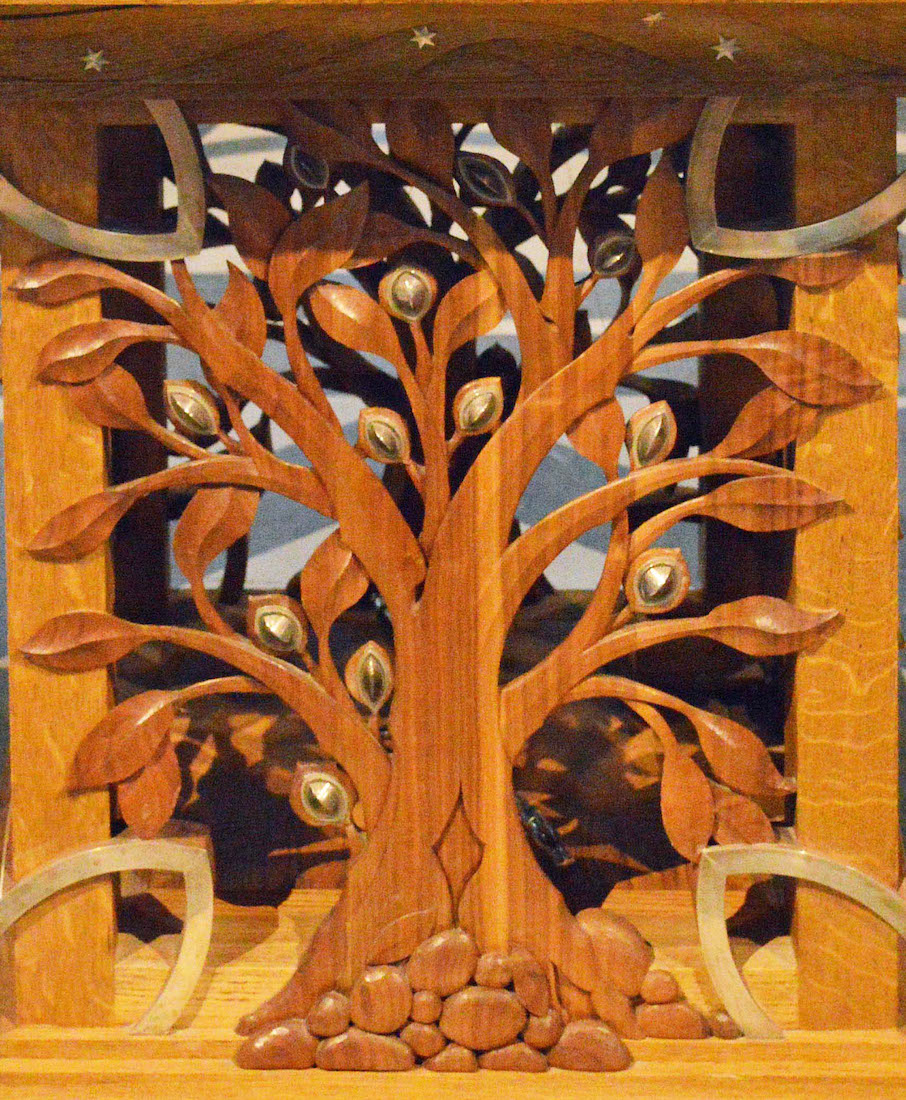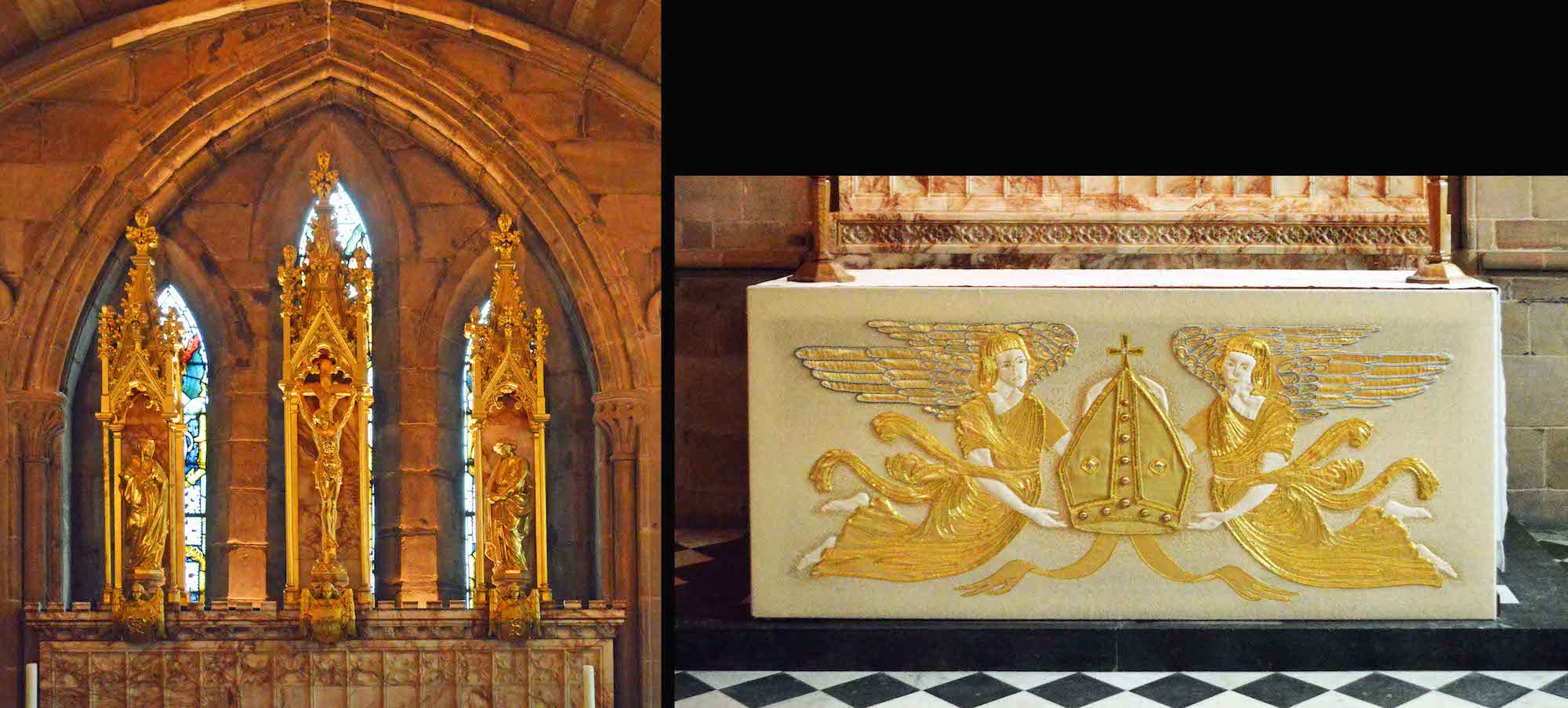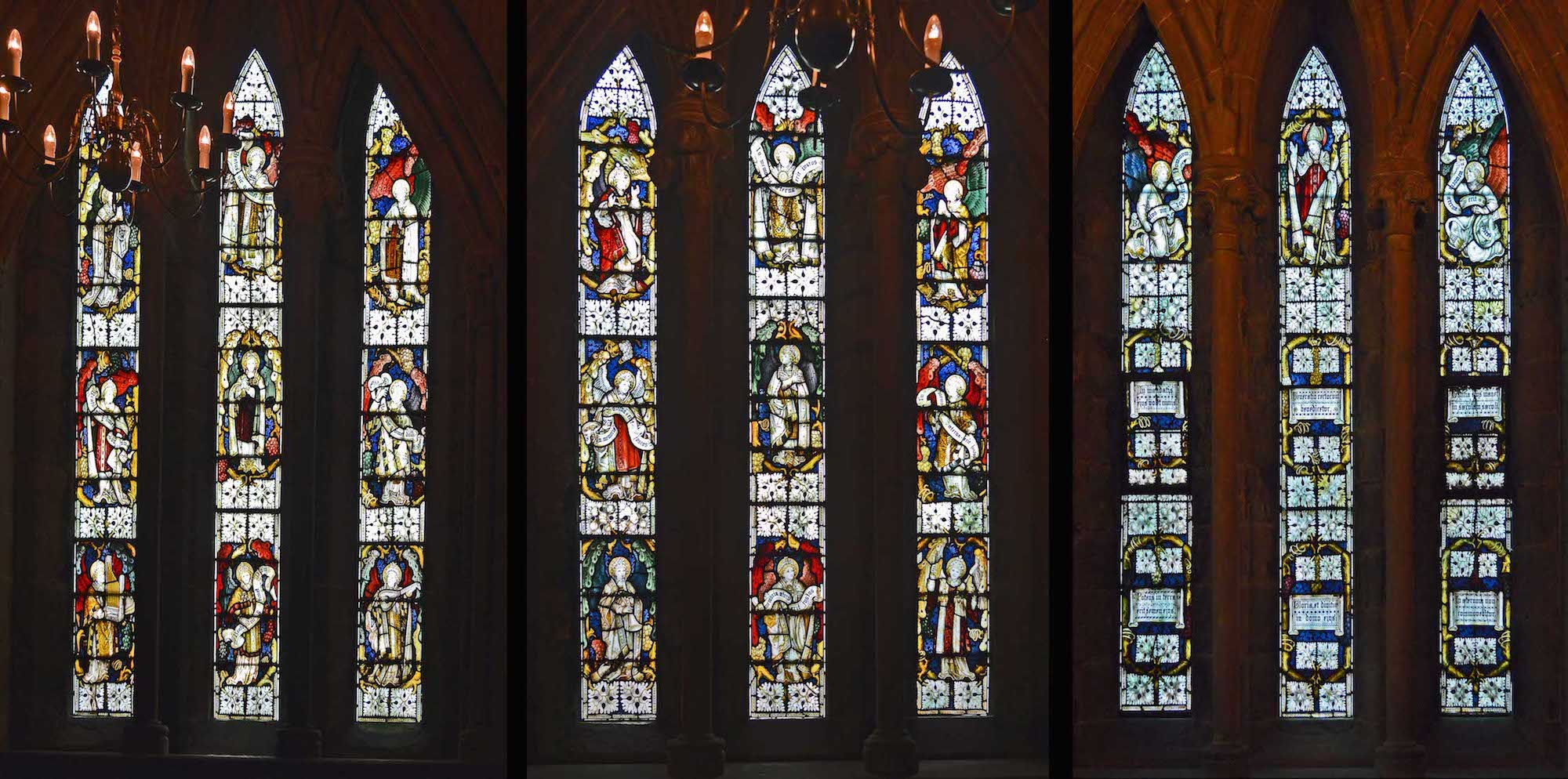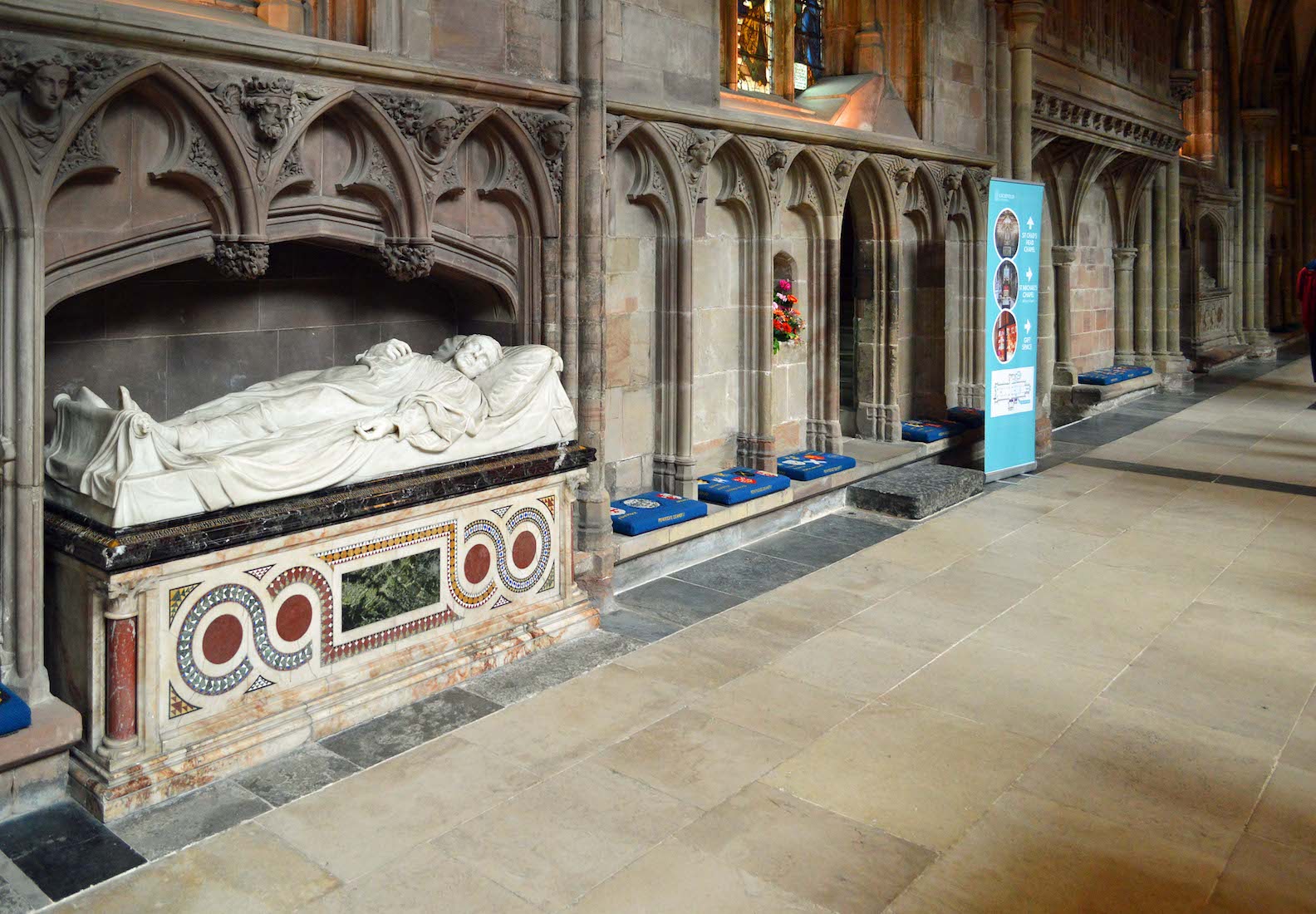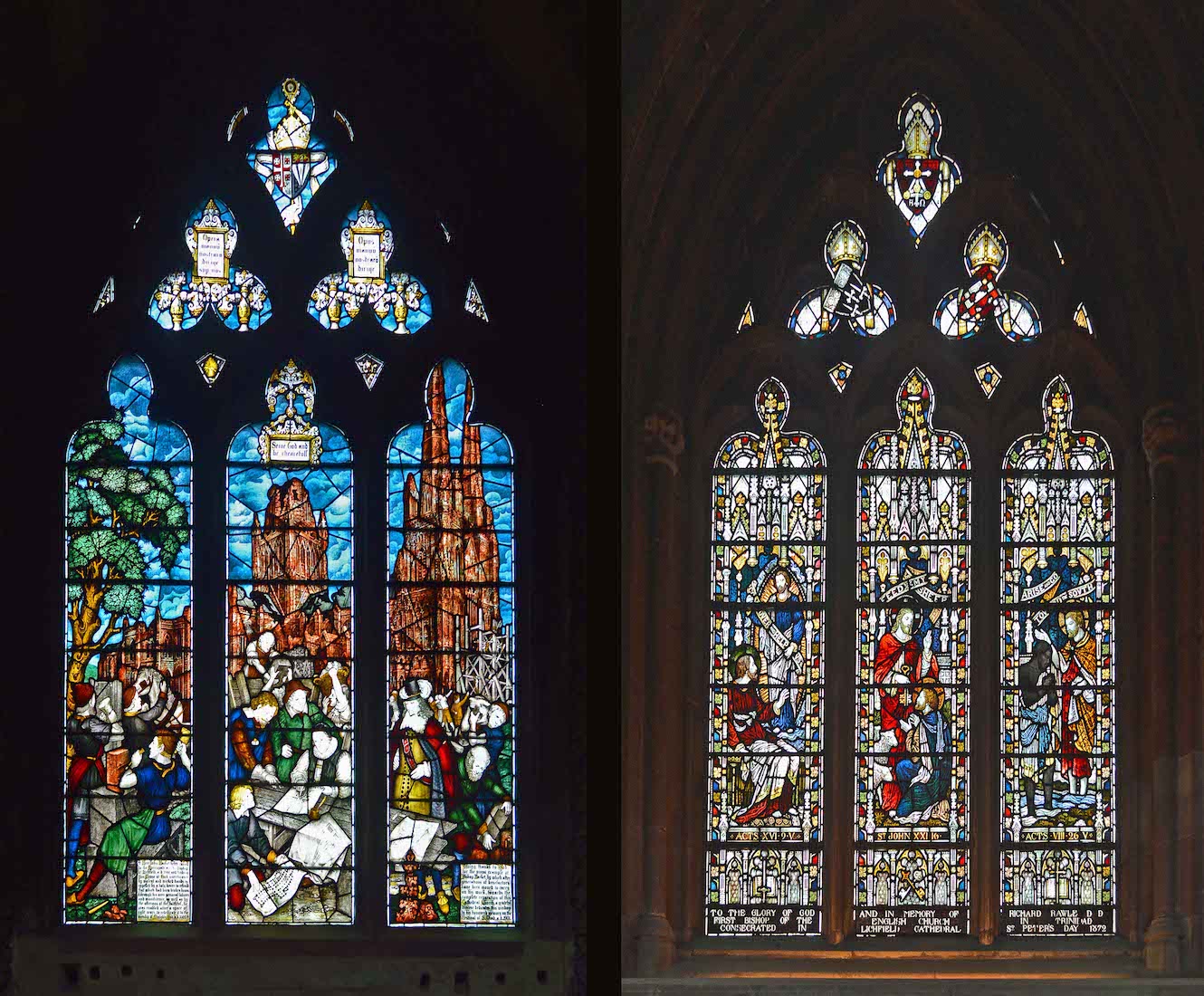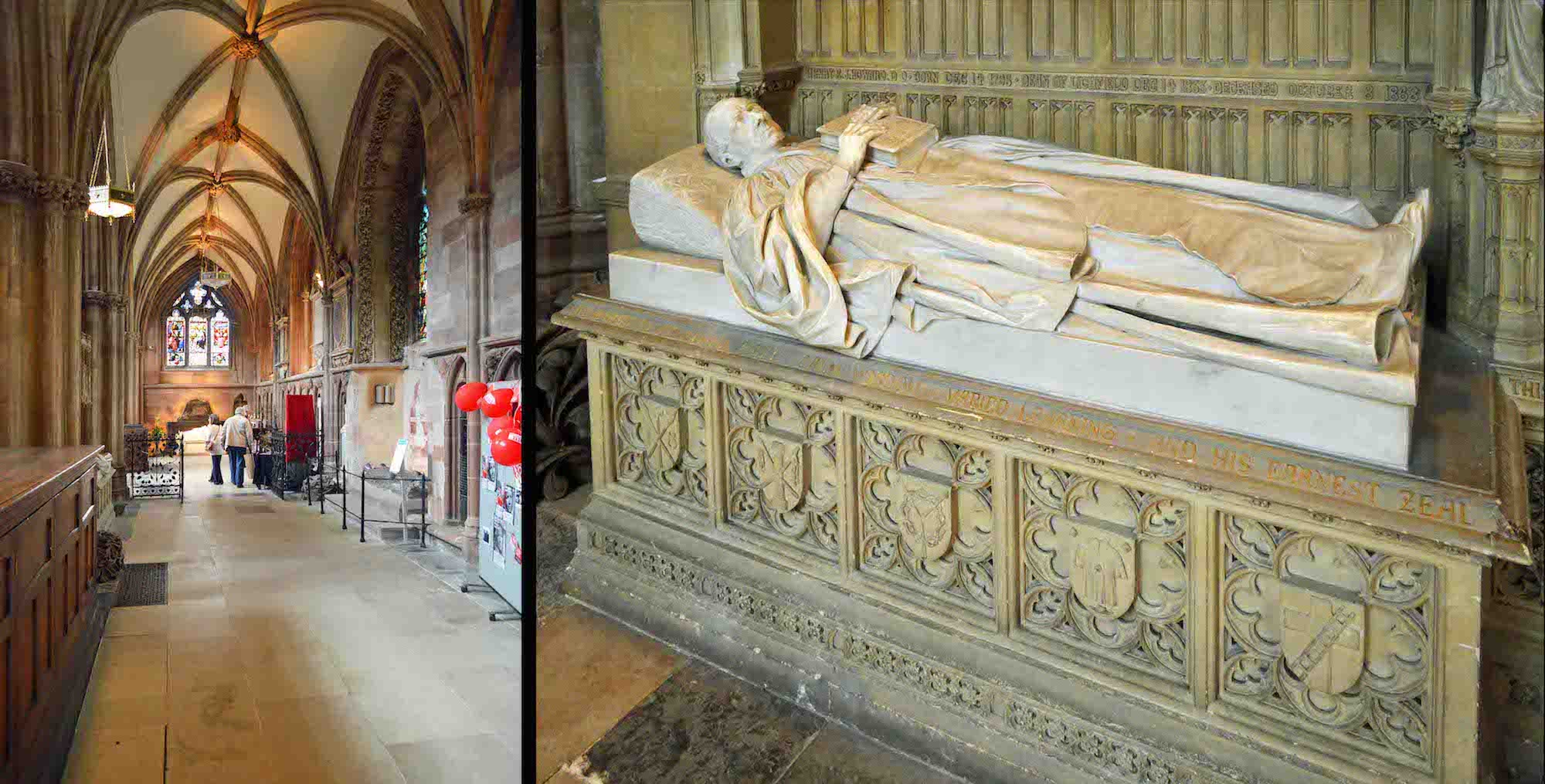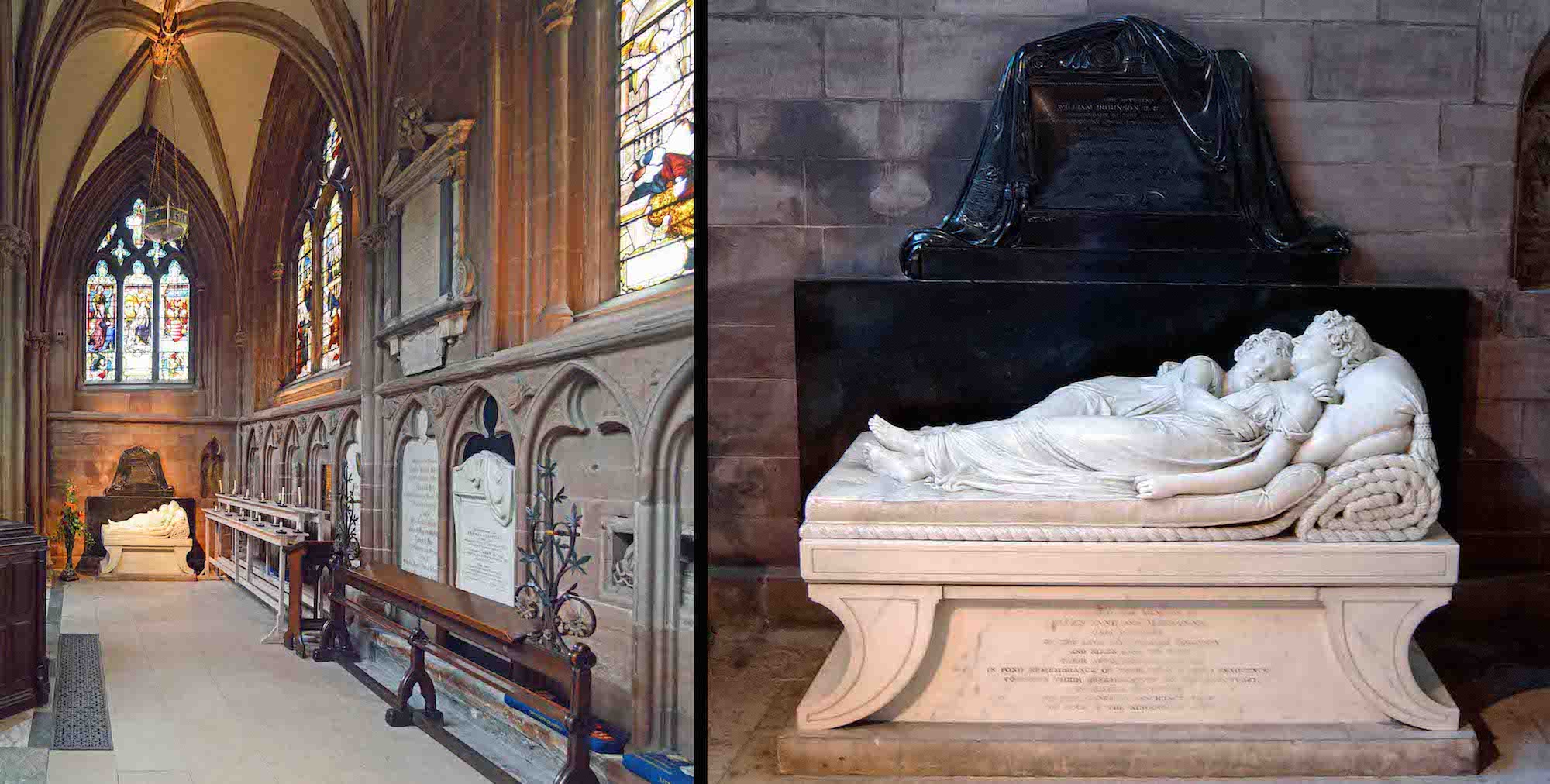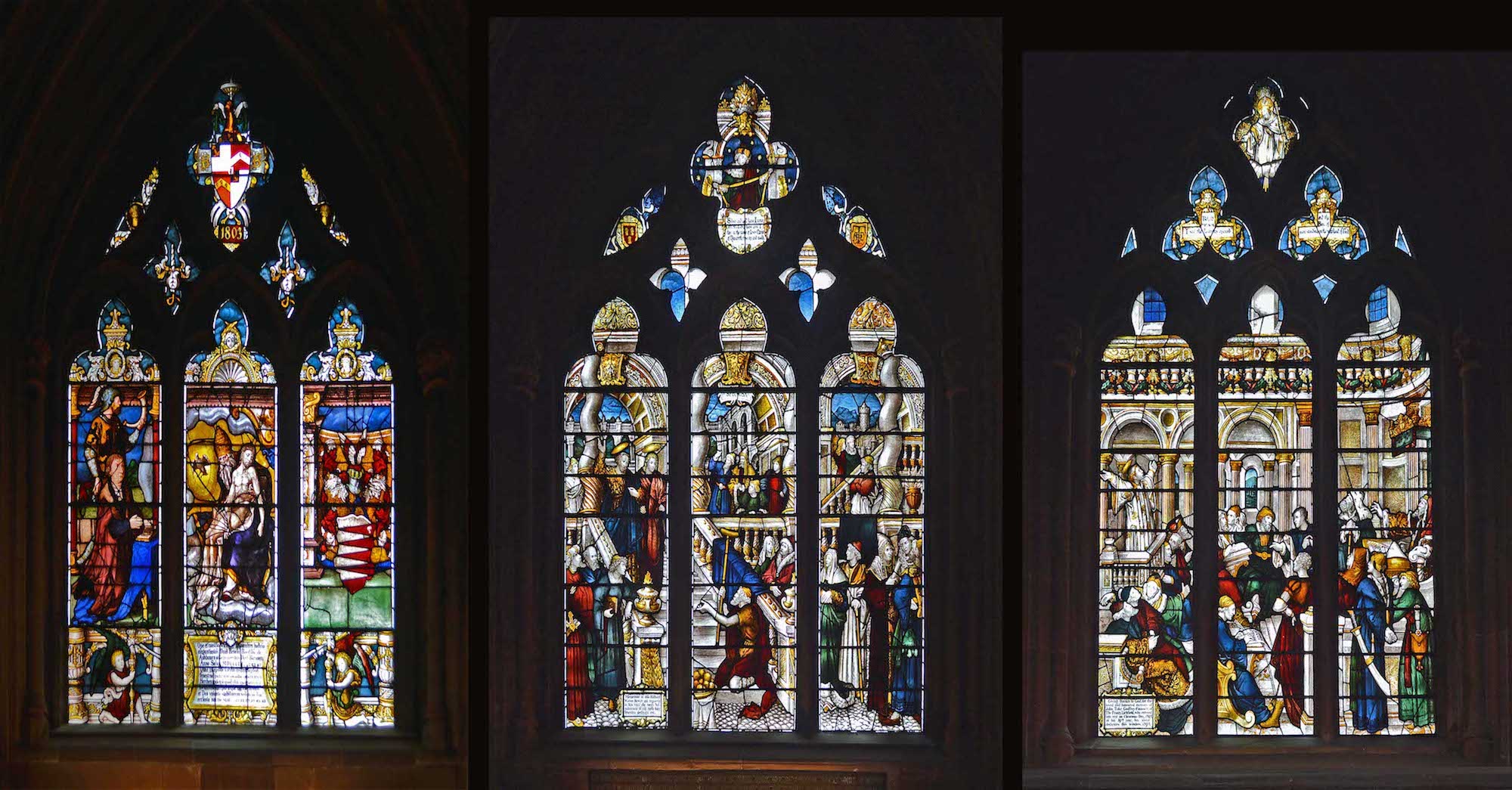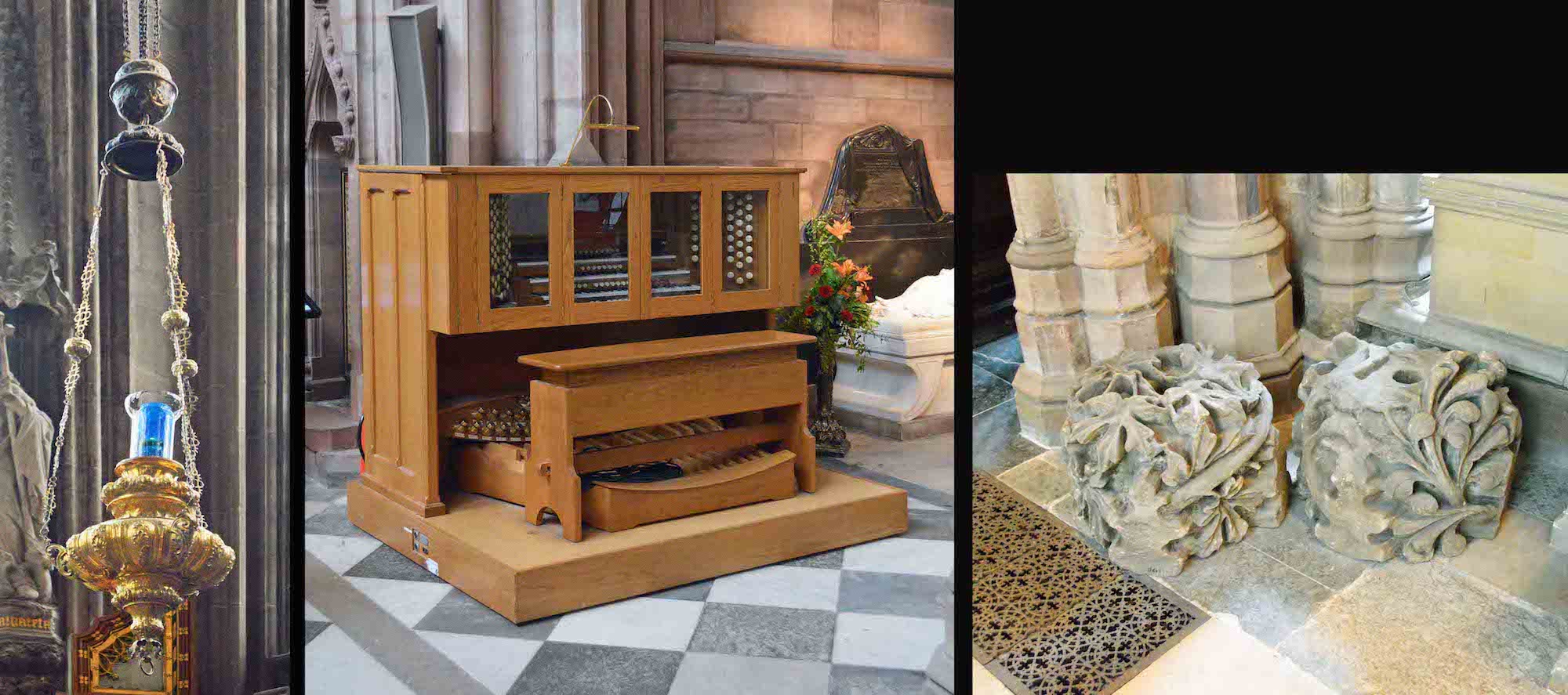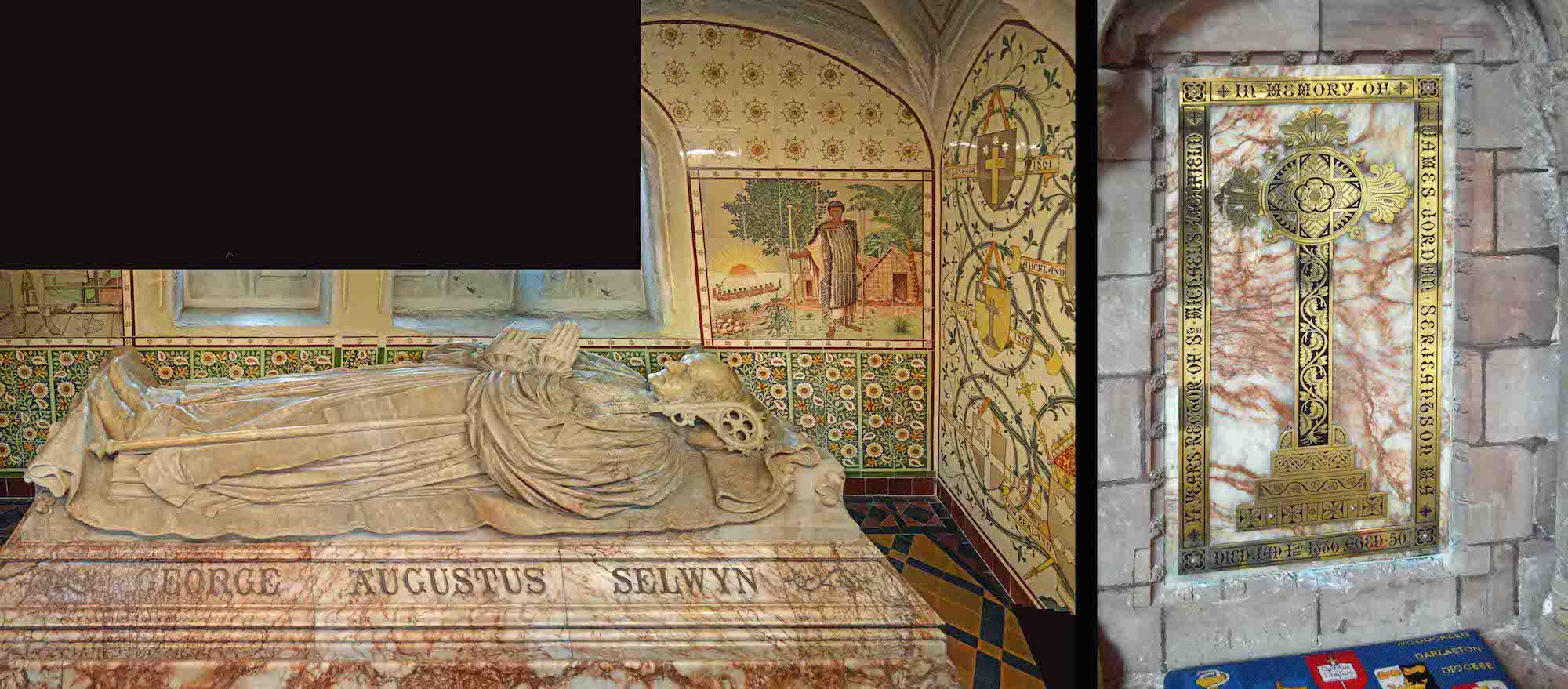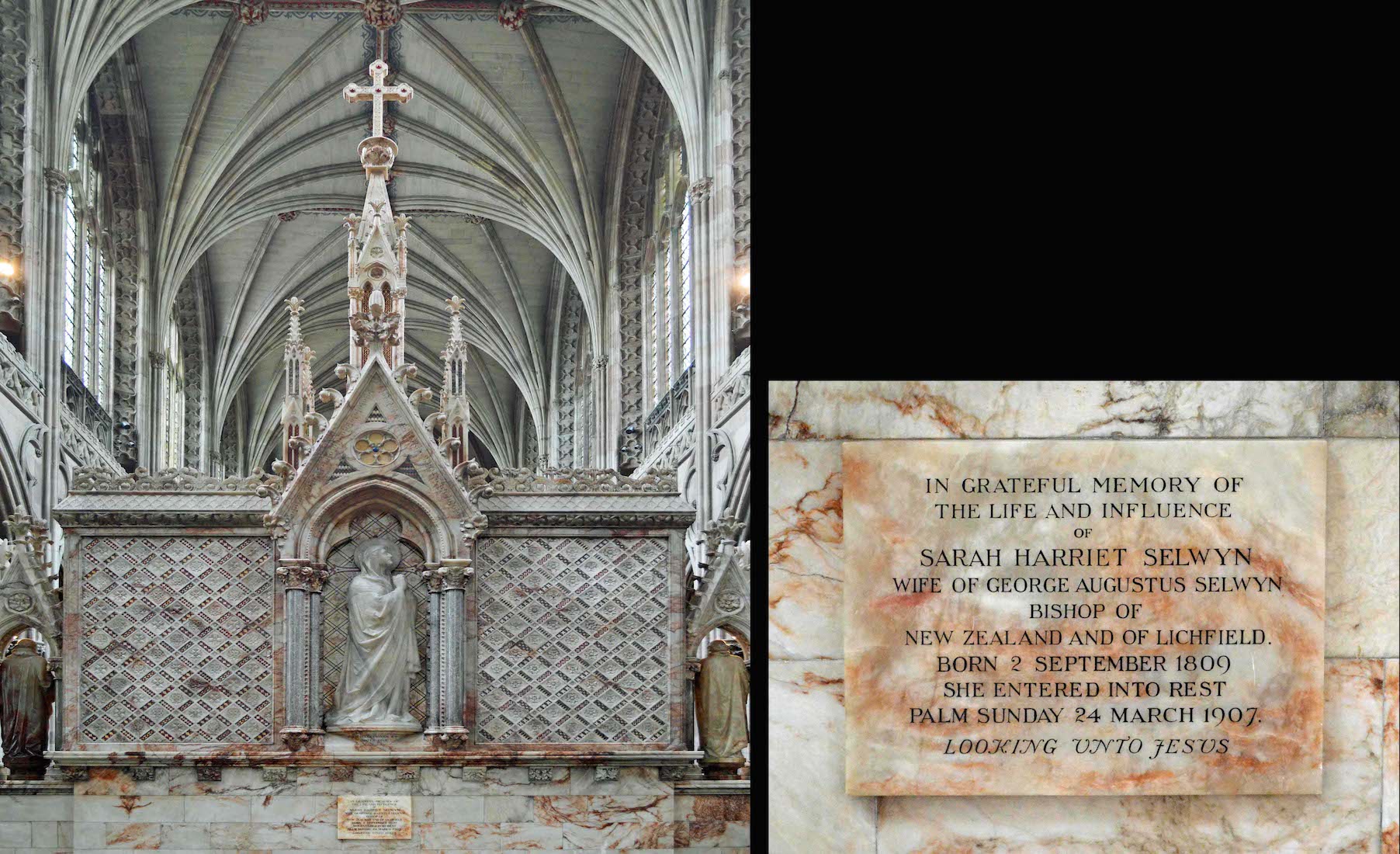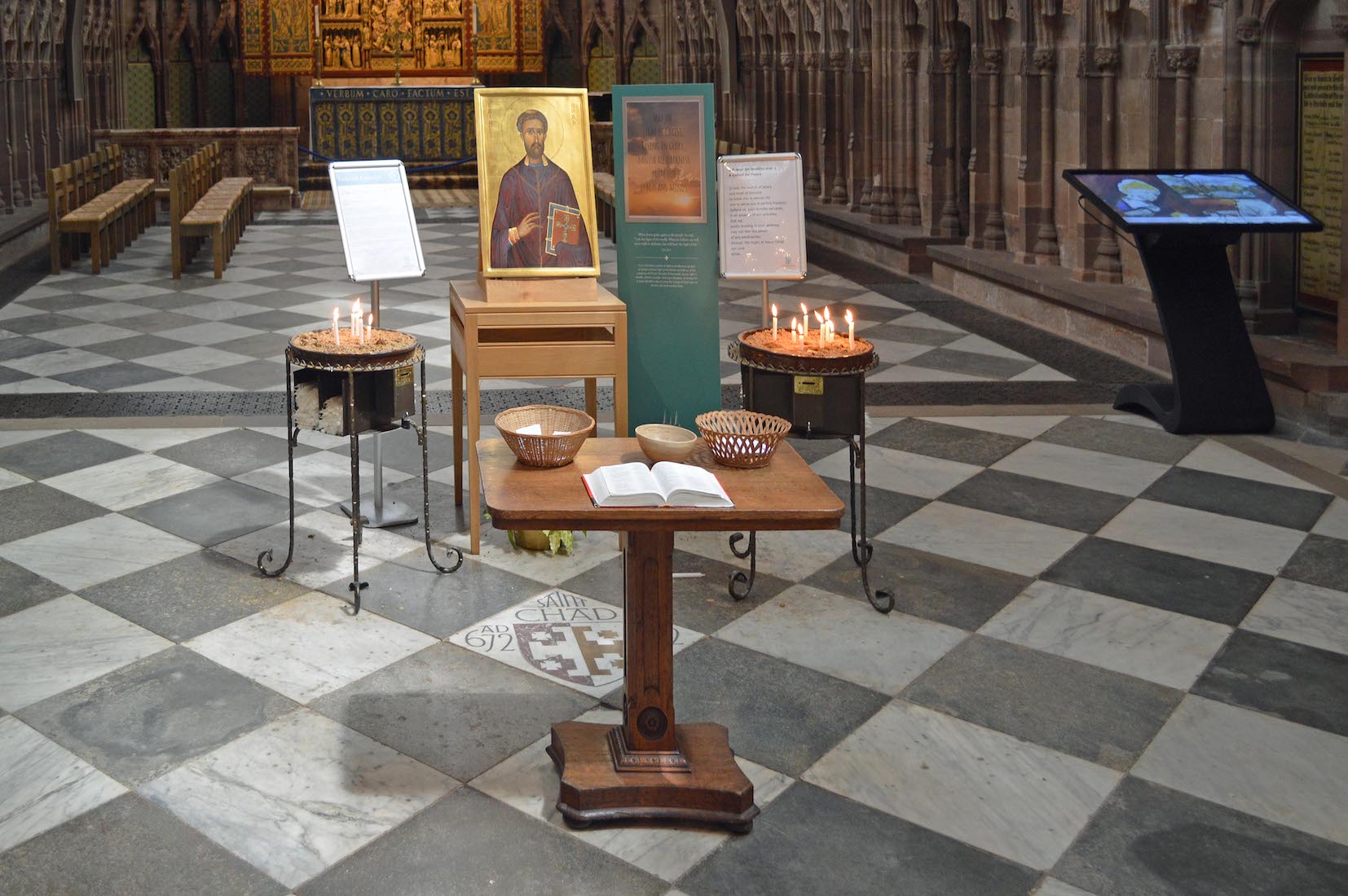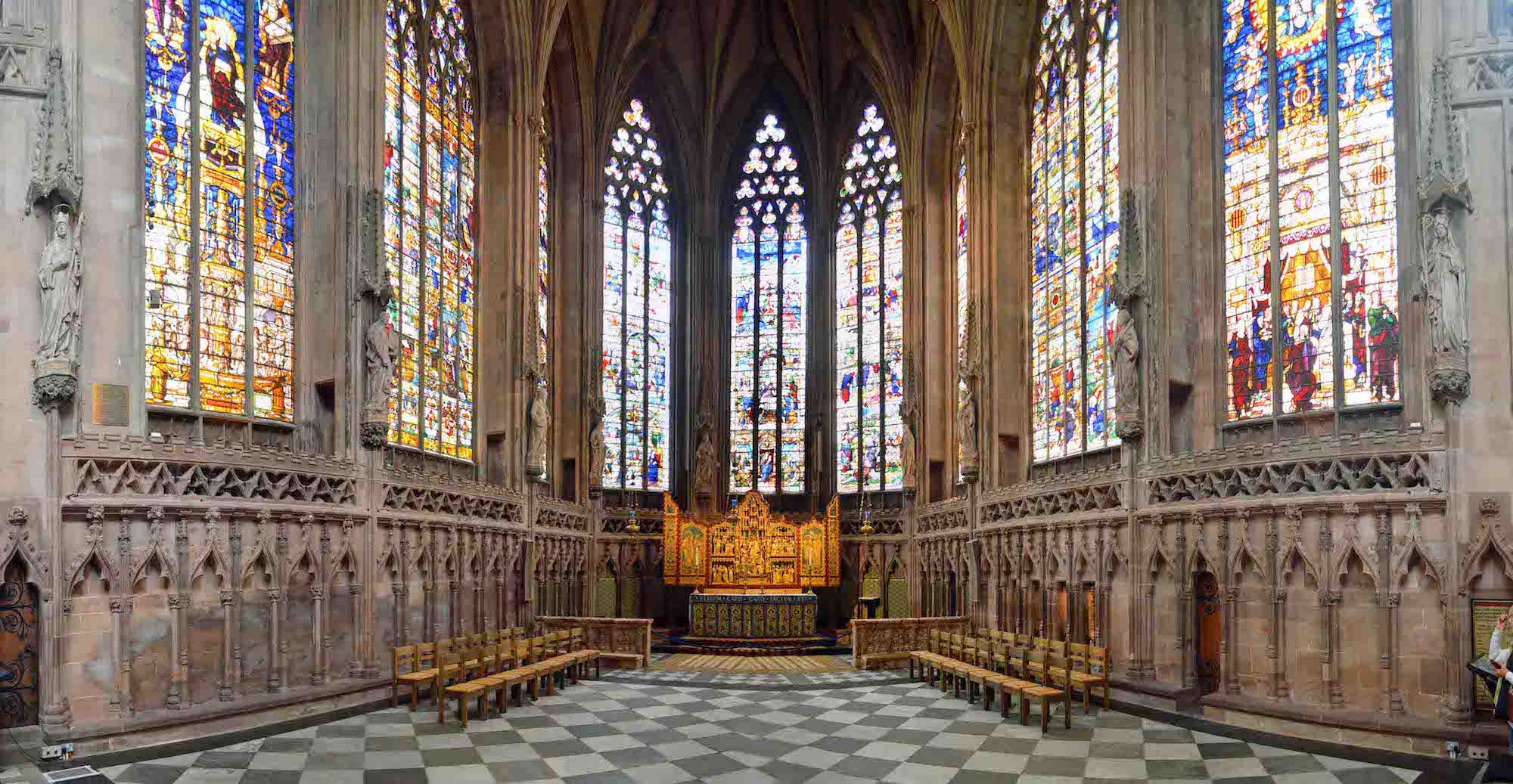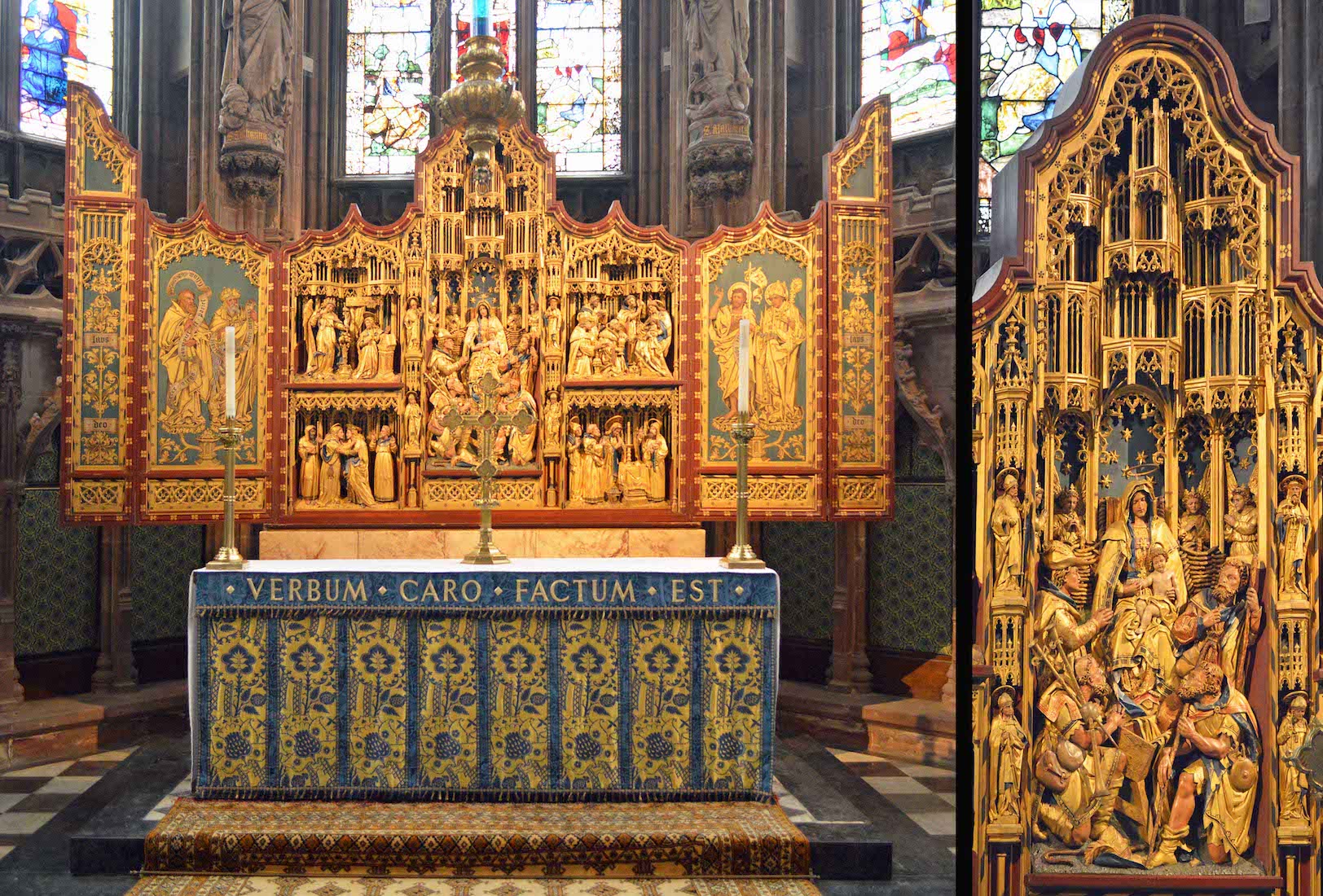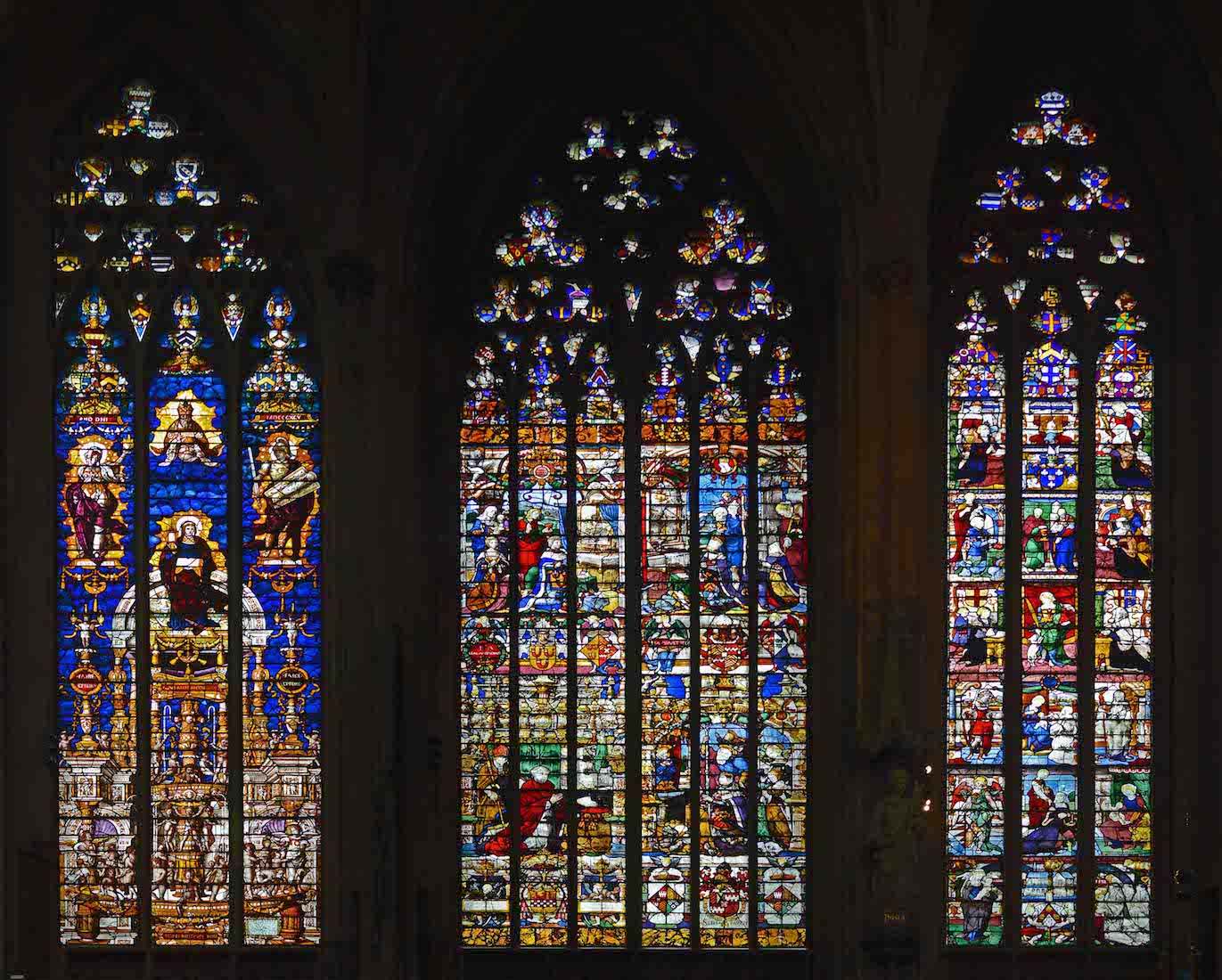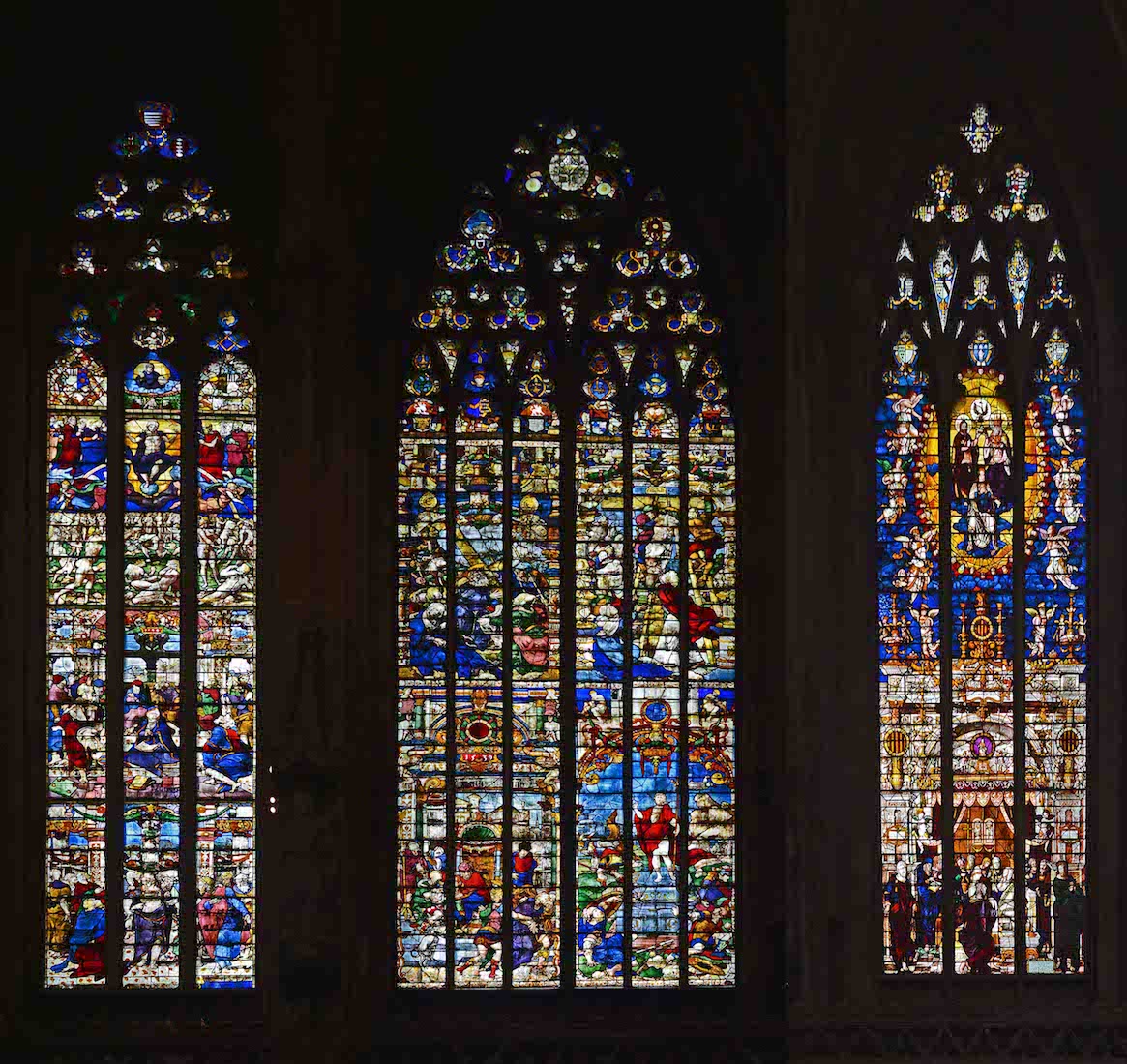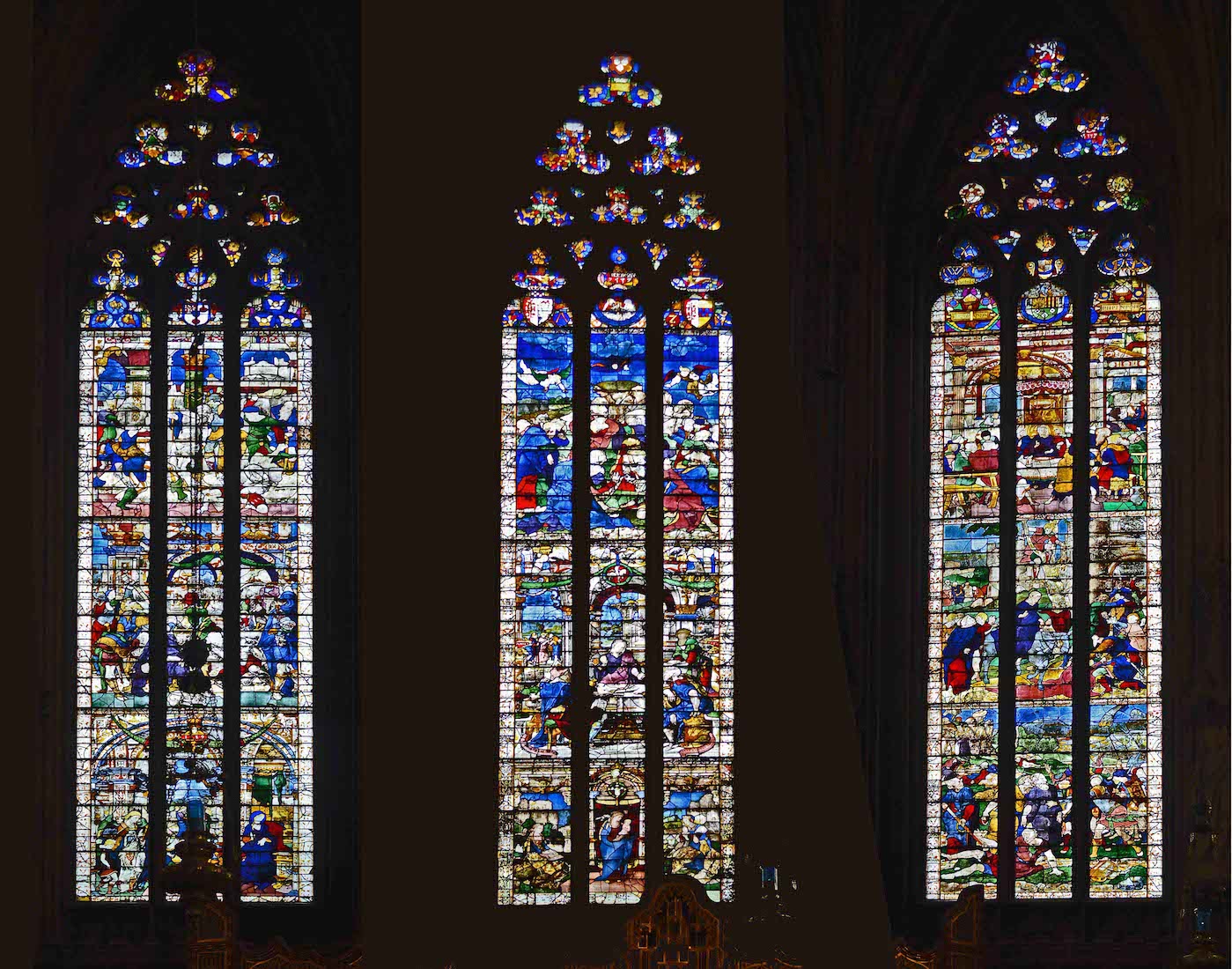81. BALCONY OF ST CHAD’S HEAD CHAPEL
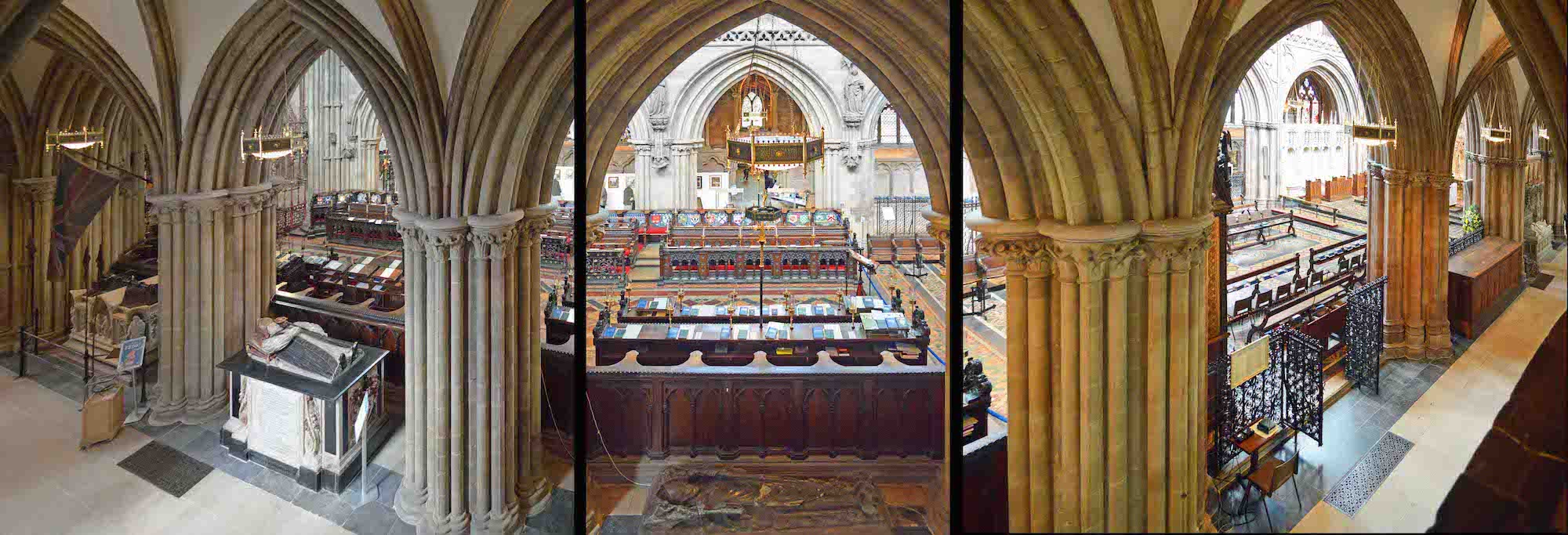
We cross the South aisle and climb the narrow stairs up to the St Chad’s Head Chapel. At the top of the stairs is a balcony looking out over the South quire aisle and into the quire/presbytery area. We notice the great similarity between the decorative quire lamps and the quire aisle hanging light fittings. PLAN
82. ST CHAD’S HEAD CHAPEL
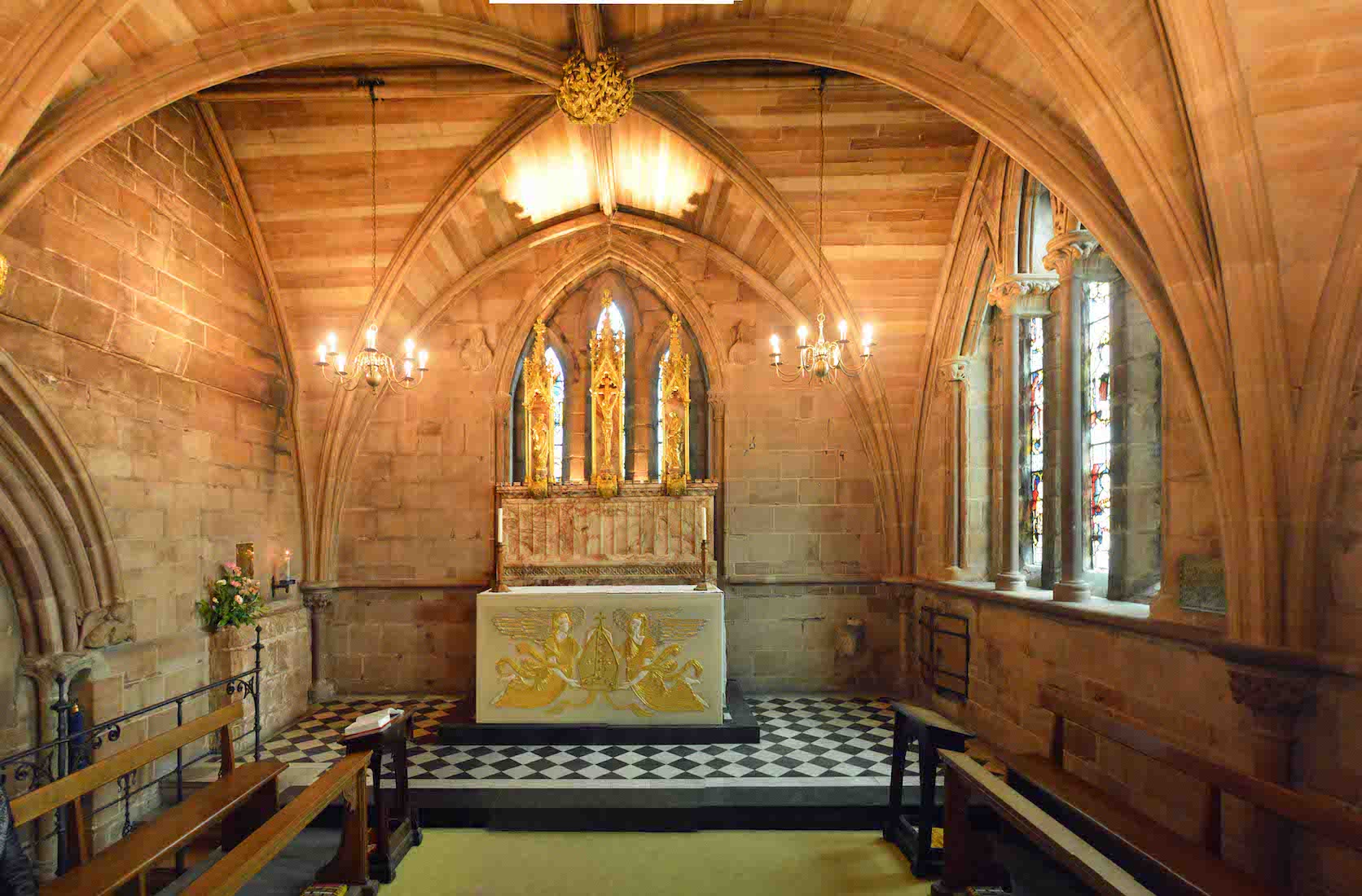
This small and simple chapel faces East. St Chad’s bones were kept here until the Reformation. His skull was shown to pilgrims gathered below from a balcony outside the chapel. The skull and the rest of Chad's relics were dispersed in the 1540s. This is an awe-inspiring chamber; perhaps because it is so small and set off from the main body of the church, but it has an unmistakable aura, a sense of age and mystery. Traces of medieval wall painting cling to the vaulted walls.
83. CHAPEL ALTAR AND REREDOS
The altar frontal is cream with two golden flying angels supporting a bishop’s mitre. Behind, the East window is obscured by three scuplted metal and marble pillars depicting the Crucifixion. At centre is Christ on the Cross, to the left St Mary, and to the right, St John.
84. CHAPEL SOUTH WINDOWS
The windows show angels in worship. As we have seen, Chad was the bishop of Mercia, and he established a see at Lichfield. His relics are enshrined in Birmingham. In liturgical art he is depicted as a bishop, holding a church. There seems to be a strong association of St Chad with angels and music in worship.
85. DOWN TO THE SOUTH QUIRE AISLE
We descend once more to the South quire aisle. Here we can look back past yet another effigy to the entry to St Chad’s Head Chapel by the blue sign. This is the tomb/memorial of Archdeacon Henry Moore who died in 1876. The effigy is the work of H. Armstead. The Ven. Henry Moore (1795 – 1876) was Archdeacon of Stafford from 1856 to 1876.
86. MORE SOUTH QUIRE AISLE WINDOWS
A further two windows along the South quire aisle ... . The window at left pictures the building of Lichfield Cathedral. The window at right has three lancets depicting: • Acts 16:11 Paul has a vision about going to Macedonia. • Jn 21:16 Jesus meets Peter on the banks of the Sea of Galilee, commanding him to ‘Feed my sheep’. • Acts 8:26 Philip baptizes the Ethiopian eunuch.
87. NEARING THE EAST END
Next along the South quire aisle we come to a further tomb chest and effigy – just seen on the left side of the view at left. This is the effigy of Dean Henry Howard (1795 – 1868) who became Dean of Lichfield in 1833. He took a prominent part in, and contributed largely to, the restoration of Lichfield Cathedral.
88. EAST END AND SLEEPING CHILDREN
As we reach the end of this aisle we notice the plaques on the right, the three remaining stained glass windows, and a very famous marble sculpture called ‘The Sleeping Sisters’ or ‘The Sleeping Children’. It is by Francis Chantrey and depicts Ellen-Jane and Marianne Robinson asleep in each other's arms on a bed. The girls died in 1813 and 1814. The work is considered to be one of the greatest works of English sculpture of the period, owing to its beauty, simplicity and grace.
89. SOUTHEAST AISLE WINDOWS
The window shown at left is the East end window of the aisle and honours Sir Brooke Boothby who rescued the Herkenrode glass which we shall see in the Lady Chapel. The remaining two windows face South.
90. SANCTUARY LAMP AND ORGAN
At the end of the South quire aisle sit two ceiling bosses, showing their large size. A small organ for use in the Lady Chapel sits nearby. The illustrated sanctuary lamp hangs in the Lady Chapel.
91. BISHOP GEORGE SELWYN TOMB
There are several very small chapels on the South side of the Lady Chapel. One of these holds the recumbent effigy of Bishop George Augustus Selwyn (1809-1878) who had a pioneering ministry in New Zealand. The effigy was carved by Thomas Nicholls from Derbyshire alabaster. The arms shown at the Bishop’s head are those of the bishopric of New Zealand, and of the dioceses formed from it. The plate at right remembers a past rector of St Michael’s Church, Lichfield. [The black cut-out at left removes some very glary small lattice windows!]
92. REAR OF HIGH ALTAR
The high altar backs onto the Lady Chapel. A colourful marble plaque is in memory of Sarah Harriet Selwyn (1809 – 1907), wife of George Augustus Selwyn Bishop of New Zealand and Lichfield. Apart from the plaque, the view from here is one of rather drab greyness. I wonder if this is a deliberate contrast with the radiant colour behind us!
93. ST CHAD MEMORIAL
At the rear of the Lady Chapel, a tile and a simple portrait mark the place where Chad’s shrine once stood. The tile reads ’St Chad AD672 1972‘. Chad (died 672) was a prominent 7th century Anglo-Saxon churchman, who became abbot of several monasteries, Bishop of the Northumbrians and then of the Mercians and Lindsey People. He was later canonised as a saint. He was the brother of Cedd, also a saint. He and Cedd are credited with introducing Christianity to the Mercian kingdom.
94. LADY CHAPEL
And finally in our Cathedral tour ... the glorious Lady Chapel! The windows originated from the Herkenrode Abbey in Belgium which fell into disrepair and was going to be knocked down when a local landowner decided to buy the glass and have it shipped over to England. The Cathedral paid a then-significant £100 for it, but today the windows are priceless. They are some of the most important medieval windows in existence.
95. LADY CHAPEL ALTAR AND REREDOS
The Lady Chapel’s carved wooden reredos was designed by Charles Eamer Kempe (1837-1907) and carved at the Zwink workshop, Oberammergau. Shown are: • (central panel) the Nativity, with the Virgin Mary and shepherds (one with a Tyrolean hat!); • (upper left) the Annunciation; • (lower left) Mary’s visit to her cousin Elizabeth; • (upper right) the Adoration of the Magi and • (lower right) the Presentation in the Temple. Much of the artwork is gilded with gold leaf.
96. LADY CHAPEL WINDOWS NORTH
The glass was designed by Pierre Coecke van Aelst (1502-1550) of Antwerp, who was the court painter to the Emperor Charles V. He is credited with bringing Italian Renaissance ideas to the Netherlands, and scholars identify his work by his figures having over-large earlobes. His students may have included Pieter Brueghel the Elder, who married his daughter, Mayken, and so his grandchildren included Pieter Brueghel the Younger and Jan Brueghel the Elder.
97. LADY CHAPEL WINDOWS SOUTH
In a very special way, the glass encapsulates the values and practices of life in the Renaissance period, and the central role of religion and culture. The subject matter is partly narrative covering the life of Christ and partly portraying donors praying before an altar or image, often with a personal patron saint to intercede.
98. LADY CHAPEL WINDOWS EAST
The East windows have scenes from the life of Christ including a central depiction of the Last Supper. I must say that I find the colourful overall spectacle of these windows more impressive than the minute detail. This completes our tour of Lichfield Cathedral.
CONCLUSION
We attended Choral Eucharist at Lichfield, but I had restricted time for photography so felt rushed. Reviewing my photographs though I realize just how stunning this Cathedral is!
I am happy to receive constructive comments or corrections concerning this website. The best websites are the ones which have no errors! I am grateful to my wife Margie who came with me, and who has proof-read these pages.
The photographs on this site are almost all mine, but I make no claims for the text. I acknowledge with thanks my dependence on the following sites:
https://www.lichfield-cathedral.org/
https://en.wikipedia.org/wiki/Lichfield_Cathedral
http://www.british-history.ac.uk/vch/staffs/vol14/pp47-57
http://www.victorianweb.org/art/architecture/scott/26.html
My photographs which appear on this site can also be found in higher resolution at:
https://www.flickr.com/photos/paulscottinfo/sets/
Paul Scott Site created 11 / 2017 reformatted 04 / 2020
